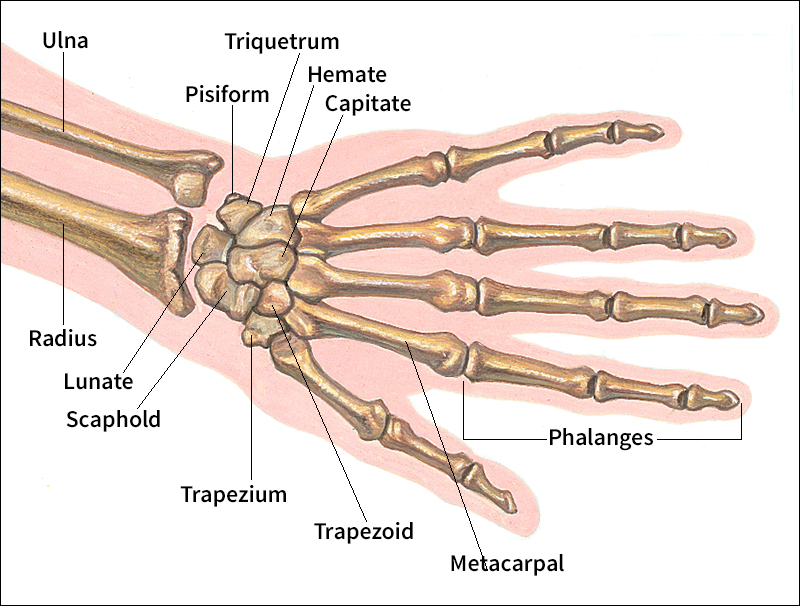Wrist is the joint that connects the hand and the forearm. A person uses the wrist to move the hand up, down, and sideways. The word wrist also refers to an area of the upper part of the hand. This area includes eight small bones called carpals.

The carpal bones extend across the hand in two rows of four bones each. Strong tissues called ligaments bind the carpals in place, but they also permit movement. Three carpals of the upper row join the radius, one of the two bones of the forearm, to form the wrist joint. The ulna, the other bone of the forearm, does not connect with the carpals. It forms a joint with the radius just above the wrist. This joint permits the wrist to rotate and thus helps turn the palm of the hand up and down.
Cordlike tissues called tendons extend through the carpal area and connect the finger bones with muscles in the arm. When these arm muscles contract, they pull the tendons and make the fingers move. The tendons on the palm side of the carpals bend the fingers. Those on the back of the hand straighten the fingers.
A fall on an outstretched arm may fracture one of the carpals, called the scaphoid bone, or the radius’s lower end. Either injury is called a broken wrist. Many athletes suffer such fractures.
